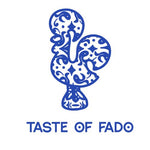Celebrating Portuguese Roots in the USA
The United States is home to a vibrant Portuguese-American community, rich in heritage, culture, and tradition. Generations of Portuguese immigrants have left an indelible mark across the country, creating communities that celebrate their roots and bring Portuguese customs to American life. Whether through festivals, cuisine, music, or shared stories, Portuguese culture remains alive and well in the USA. Let’s explore the journey of Portuguese immigrants, the communities they built, and how Portuguese roots continue to shape life for many Americans today.
1. The Portuguese-American Journey: A Brief History
Portuguese immigration to the United States began as early as the 17th century, with explorers and settlers arriving primarily in New England. However, the largest waves of Portuguese immigrants came later in the 19th and early 20th centuries. Many came from the Azores, Madeira, and mainland Portugal, drawn by opportunities for work, particularly in the whaling industry, agriculture, and later in urban manufacturing.
States like Massachusetts, Rhode Island, and California became hubs for Portuguese communities, where immigrants built strong networks that helped them thrive while preserving their traditions. Over time, Portuguese Americans became an integral part of the American fabric, while keeping alive their language, customs, and family values.
2. Portuguese Cultural Hubs in the USA
Several regions in the U.S. have become famous for their Portuguese communities, each with unique contributions to the cultural landscape.
-
New England: Massachusetts and Rhode Island are home to some of the largest Portuguese-American communities, especially in cities like Fall River, New Bedford, and Providence. Here, Portuguese heritage is celebrated through festivals, food, and community events. New Bedford, once a whaling hub, became known for its Azorean population, who brought their fishing and seafaring skills to the U.S.
-
California: The San Francisco Bay Area and Central Valley have long-standing Portuguese populations, particularly those with roots in the Azores. Portuguese fiestas, known as Festas do Espírito Santo, are celebrated yearly, bringing communities together for traditional processions, feasts, and music.
-
Hawaii: Portuguese immigrants arrived in Hawaii to work on sugar plantations in the 19th century. They brought with them unique culinary influences, such as the beloved malasadas, a type of Portuguese doughnut that has become a Hawaiian favorite.
3. Portuguese Festivals and Traditions in the USA
Portuguese-American communities proudly preserve traditional customs through festivals and events that celebrate their heritage. Some popular events include:
-
Festa do Espírito Santo (Feast of the Holy Spirit): This Azorean tradition is celebrated with parades, Mass, food, and music, honoring Queen Saint Isabel and the Holy Spirit. Towns in California, Massachusetts, and Rhode Island all have versions of this cherished festival, with people of all ages coming together in traditional attire.
-
Our Lady of Fatima Festivals: Many Portuguese communities in the U.S. hold annual processions and Masses to honor Our Lady of Fatima, a significant figure in Portuguese Catholicism. These events showcase the importance of faith and bring together families and friends in celebration.
-
Sardine Festivals and Folklore Dancing: Festivals that celebrate Portuguese cuisine and music are popular, often featuring grilled sardines, folklore dancing, and traditional Portuguese music. These events allow younger generations to connect with their heritage and give visitors a chance to experience Portuguese culture firsthand.
4. Portuguese Cuisine: A Taste of Home in America
Food is a central part of Portuguese culture, and Portuguese-American communities have ensured that traditional dishes remain accessible. Many Portuguese bakeries, markets, and restaurants across the U.S. offer iconic dishes like bacalhau (salted cod), linguiça (Portuguese sausage), sopa de couves (kale soup), and pastéis de nata (custard tarts).
In some areas, like New England, Portuguese food has even influenced local culinary traditions. Linguica and chouriço are popular additions to American recipes, and kale soup has become a beloved regional dish, a fusion of Portuguese and American flavors.
💡 Looking to add a touch of Portugal to your kitchen? Our shop offers unique Portuguese decor, including tiles and kitchen items featuring traditional patterns, bringing a bit of Portugal to your home.
5. Preserving Portuguese Language and Heritage
Portuguese-American organizations and cultural centers work to preserve the language and customs of Portugal for future generations. Many families continue to speak Portuguese at home, helping children maintain fluency. Schools and community centers offer Portuguese language classes, and events are held to celebrate Portuguese arts, including music, dance, and literature.
For the younger generations, Portuguese-American clubs and societies provide a sense of community and help bridge the gap between their heritage and American identity. These organizations not only keep traditions alive but also encourage cultural exchange and understanding.
The Portuguese-American community is a vibrant part of the U.S., adding a beautiful blend of history, culture, and tradition to American life. Whether it’s through festive celebrations, savory dishes, or family traditions, Portuguese roots in the U.S. continue to flourish, enriching communities across the nation. Embracing these traditions not only honors the past but also helps ensure that future generations carry forward the spirit of Portugal. Our shop offers a range of Portuguese-inspired items, perfect for celebrating and sharing the beauty of Portuguese culture wherever you are.




